Goutweed
Goutweed is a perennial plant with medicinal properties. Its minimum lifespan is approximately 50 years. It grows almost throughout Europe and some regions of North Africa.
The rhizome of goutweed is located underground, has a horizontal shape, and reaches 40 centimeters in length. Because of this, the weed is difficult to uproot. To get rid of goutweed, simply block its light. It also does not get along well with potatoes, tulips and other garden crops and annuals, as it cannot survive digging and hilling.

Field Bindweed
People often call this plant a birch. Flowering occurs in the 2nd year of life from the end of May to September. It reproduces very quickly with the help of seeds and root shoots. The danger is that this weed envelops everything in a row, including any plants and causes them to lodging.
The main method of combating beautiful bindweed is timely weeding and removal of the main root of the plant. The main task is to prevent the bindweed from spreading across the field. You can also cultivate the soil and periodically dig it up, completely removing all the roots.

Chickweed (stellaria)
Stellaria media or chickweed is an annual weed with a weak, lying stem. It has a branched, taproot. In fertile areas, it covers the ground completely, which is why the sun does not warm the soil and air circulation is disrupted. Chickweed has white, star-shaped flowers, blooms from May to August, and is a real nuisance to gardeners.
Chickweed is a wintering weed, so it is important to loosen the soil before it recovers from the winter cold. In the fall, you need to dig up the area with a pitchfork and remove all the roots.
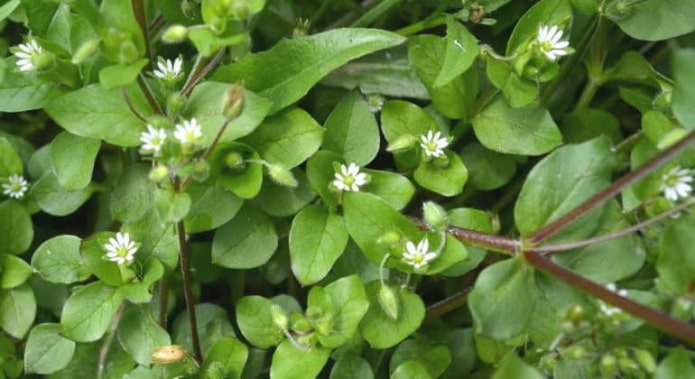
Sorrel
A stemless plant with a thin, creeping rhizome. The weed loves shade and grows in moist soils. In some regions of the country, wood sorrel is even listed in the Red Book. Wood sorrel can be either a weed or an ornamental plant. You need to know how they differ so as not to confuse them. The seeds of the wood sorrel fly in all directions, so it very quickly takes over the territory.
There are several ways to fight wood sorrel: mulching the beds after planting, treating with chemicals, regular weeding and, in extreme cases, removing the top layer of soil.
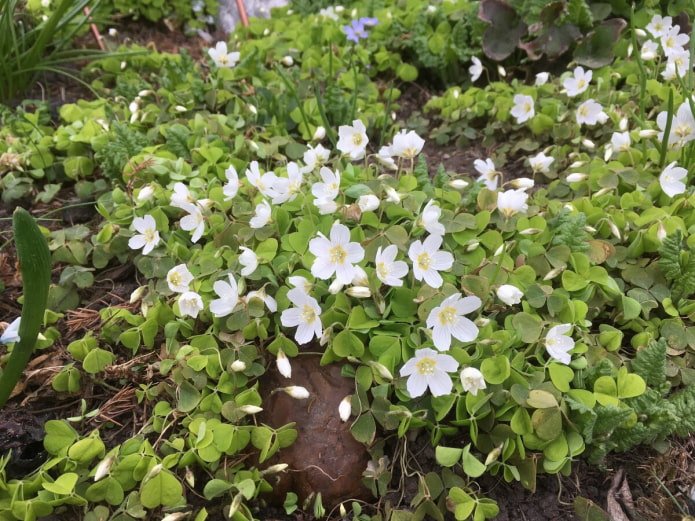
Commelina vulgare
It blooms with bright blue flowers, so it is sometimes called blue-eyed. Due to the ability to reproduce both by seeds and rooting nodes on the stem, it is classified as a malicious weed. Commelina can form dense thickets, shading and suppressing cultivated plants.
This weed can be eliminated by cultivating the soil with the obligatory destruction of all weeded plants. In small areas, Commelina can be weeded manually and polyethylene darkened film, peat, compost, pine needles and other materials can be used for mulch.
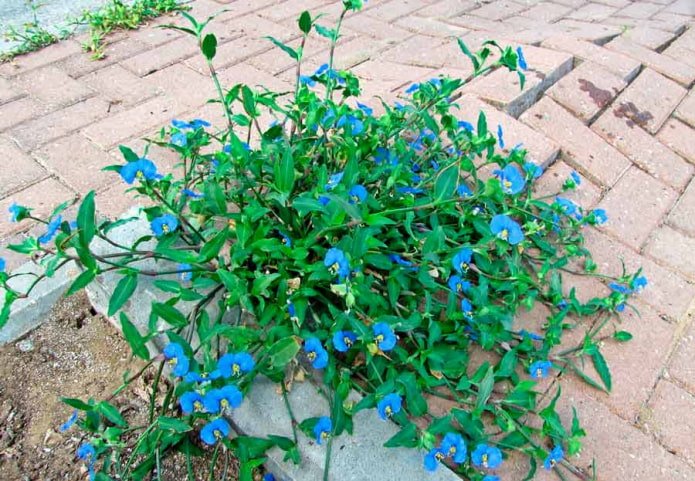
Clasping deadnettle
The deadnettle is easily recognized by its rounded-kidney-shaped leaves with serrated edges and miniature buds. The weed grows very actively in light, fertile soils that do not require moisture. Deadnettle contaminates both grain and row crops with its abundance.
One of the most popular and effective methods of combating this weed is deep planting of seeds.
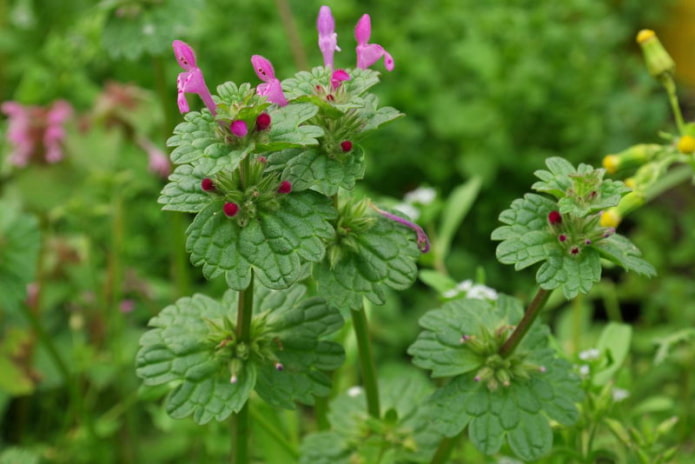
Field thistle
It has prickly, oblong, notched, bristly-toothed leaves and lilac-pink flowers collected in baskets. Its seeds are spread by the wind and can survive from 5 to 20 years. The contamination of the beds with this very beautiful plant contributes to the development of harmful bacteria, fungi, insects.
In order to remove the thistle from your garden, you need to understand that this plant has a very long and powerful root and part of it may still remain in the ground. You should get rid of the thistle in the fall, digging up the entire area where the thistle grew and destroying the remains of the roots.
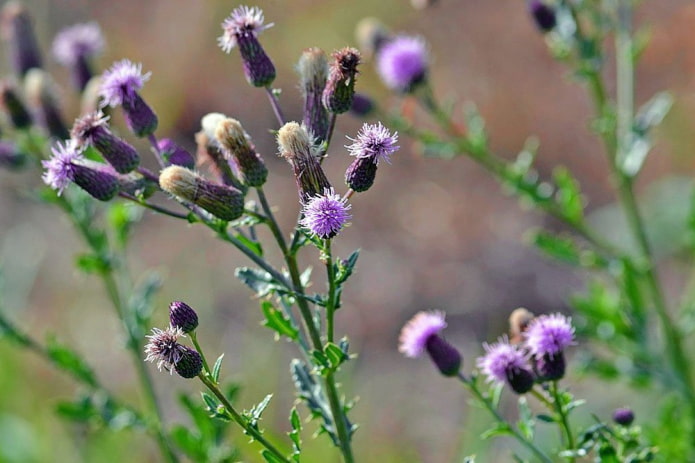
Despite all the attractiveness of these deceiving weeds, you need to get rid of them. Only then will your summer cottage always be clean and tidy, and cultivated and ornamental plants will bloom and multiply to the maximum.
Now reading:
- Built-in kitchens: top options and 20 photos in the interior.
- Brick Walls in the Kitchen: 55 Interior Ideas and Imitation Options
- Experience the Thrill of the BMW 2 Series Luxury Coupe
- Black and white stretch ceiling: 50 photos and the latest design ideas
- How to Choose the Best Firewood for Your Stove? A Complete Guide to Types and Storage.